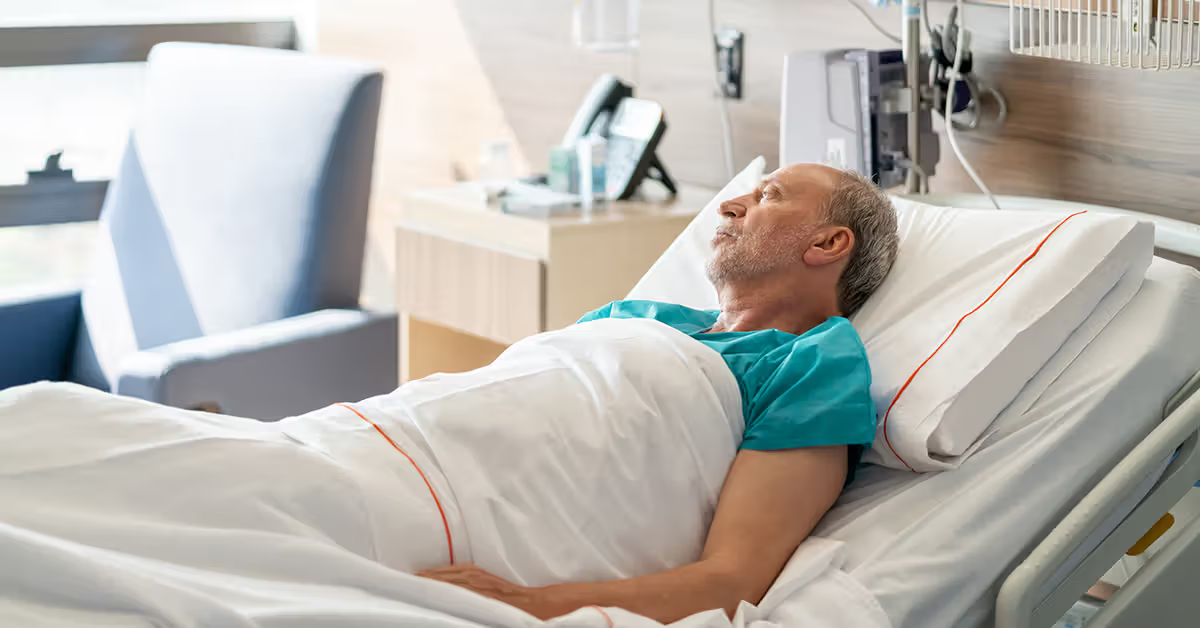Life After Prostate Surgery: What to Expect and How to Regain Confidence
Prostate surgery can be life-saving, but the recovery journey often brings unexpected challenges that many men aren’t fully prepared for. One of the most common post-surgical complications is urinary incontinence, affecting up to 87% of men immediately after prostatectomy. While this can feel overwhelming, understanding what to expect and knowing that effective incontinence management solutions exist can make all the difference in your recovery journey.
The First Few Weeks: What’s Normal
Immediately following prostate surgery, most men experience some degree of urinary incontinence. This is completely normal and expected. Your body has just undergone a significant procedure, and the muscles and nerves that control bladder function need time to heal and adjust.
During the first two to four weeks, you’ll likely experience frequent leakage, especially when standing up, coughing, sneezing, or engaging in any physical activity. Some men find they leak constantly during this phase, while others have more intermittent issues. Both scenarios are within the range of normal recovery.
It’s important to work closely with your healthcare team during this time. They’ll remove your catheter at the appropriate time and provide guidance on pelvic floor exercises that can significantly improve your recovery trajectory.
Understanding the Timeline
Recovery from post-prostatectomy incontinence varies widely from person to person. Some men regain continence within a few weeks, while others may take several months or even up to a year. Factors affecting recovery time include your age, overall health, surgical technique used, and how diligently you perform rehabilitation exercises.
Research shows that approximately 50% of men regain continence within three months, 75% within six months, and 90% within one year. However, these statistics don’t tell the whole story. Even if you fall into the group that takes longer to recover, there are numerous ways to manage symptoms effectively and maintain your quality of life during the healing process.
The Emotional Impact
The physical challenges of post-surgical incontinence are only part of the story. Many men experience significant emotional distress, including embarrassment, anxiety, and depression. It’s common to feel a loss of masculinity or worry about intimate relationships.
These feelings are valid and deserve attention. Speaking with a counselor who specializes in post-surgical recovery can be incredibly beneficial. Many men also find support groups helpful, where they can connect with others who truly understand what they’re going through.
Remember that your worth as a person isn’t defined by bladder control. This is a medical condition with solutions, not a character flaw or something to be ashamed of.
Practical Management Strategies
While you’re healing, managing leaks effectively is essential for maintaining confidence and continuing your normal activities. Here are several strategies that can help:
Pelvic Floor Exercises: Also known as Kegel exercises, these strengthen the muscles that control urination. Your doctor or a pelvic floor physical therapist can teach you the proper technique. Consistency is key – most experts recommend doing these exercises three times daily.
Scheduled Bathroom Visits: Rather than waiting until you feel the urge, try urinating on a schedule, such as every two hours. This can help prevent accidents and gradually retrain your bladder.
Lifestyle Modifications: Certain foods and beverages can irritate the bladder and worsen symptoms. Common culprits include caffeine, alcohol, spicy foods, and acidic fruits. Identifying and avoiding your personal triggers can reduce leakage.
Protective Products: Various products can help manage leaks discreetly. Options range from absorbent pads and protective underwear to specialized medical devices designed to prevent leakage without compromising comfort or circulation.
Returning to Activities You Love
One of the biggest concerns men have after prostate surgery is whether they’ll be able to return to their favorite activities. The good news is that with proper management, most men can resume exercise, travel, social engagements, and intimate relationships.
Start slowly with low-impact activities like walking, and gradually increase intensity as you heal. Swimming is excellent exercise that’s gentle on recovering bodies. For higher-impact activities like running or tennis, you may need to wait longer and ensure you have reliable leak protection.
Travel may require extra planning initially, but it’s absolutely possible. Pack extra supplies, know where restrooms are located, and don’t let anxiety prevent you from enjoying new experiences.
When to Seek Additional Help
While most men see gradual improvement over time, it’s important to know when to seek additional medical intervention. Contact your doctor if:
- You experience severe or worsening incontinence after initial improvement
- You have pain, burning, or blood in your urine
- You develop fever or signs of infection
- Your symptoms significantly impact your mental health
- You show no improvement after six months of diligent pelvic floor exercises
Additional treatment options exist, including medications, biofeedback therapy, electrical stimulation, injectable bulking agents, and surgical procedures. Your urologist can help determine the best approach for your specific situation.
Building Your New Normal
Recovery from prostate surgery is a journey, not a destination. There will be good days and challenging days, but most men find that with time, patience, and the right strategies, they regain confidence and return to fulfilling lives.
Focus on celebrating small victories – perhaps you made it through a social event without incident, or you noticed you’re using fewer pads than last week. These incremental improvements add up to significant progress over time.
Stay connected with supportive people who understand your journey. Whether that’s your partner, close friends, a support group, or an online community, having people you can talk to honestly makes a tremendous difference.
Looking Forward with Confidence
Prostate surgery marks a significant milestone in your health journey, but it doesn’t define your future. While urinary incontinence can be frustrating and emotionally challenging, it’s a manageable condition with numerous effective solutions available.
As you navigate recovery, remember that you’re not alone. Millions of men have walked this path before you and successfully regained their confidence and quality of life. With patience, proper medical support, and effective management tools, you can too.
The key is finding what works best for your unique situation and not letting temporary setbacks discourage you from living fully. Whether you’re two weeks or two years post-surgery, there are always strategies and solutions available to improve your situation.
PaceyCuff offers innovative, comfortable solutions specifically designed for men managing post-surgical incontinence. Unlike traditional clamps that can be painful or restrictive, PaceyCuff products are engineered to reduce leaks by 90-95% while maintaining proper blood flow and comfort throughout the day. With over 20,000 satisfied users, PaceyCuff helps men regain confidence and return to active lives after prostate surgery. The metal-free, latex-free design means you can wear it comfortably all day, whether you’re at work, exercising, or socializing. Many men find that having reliable leak protection allows them to focus on healing and enjoying life rather than constantly worrying about accidents.









Post Comment